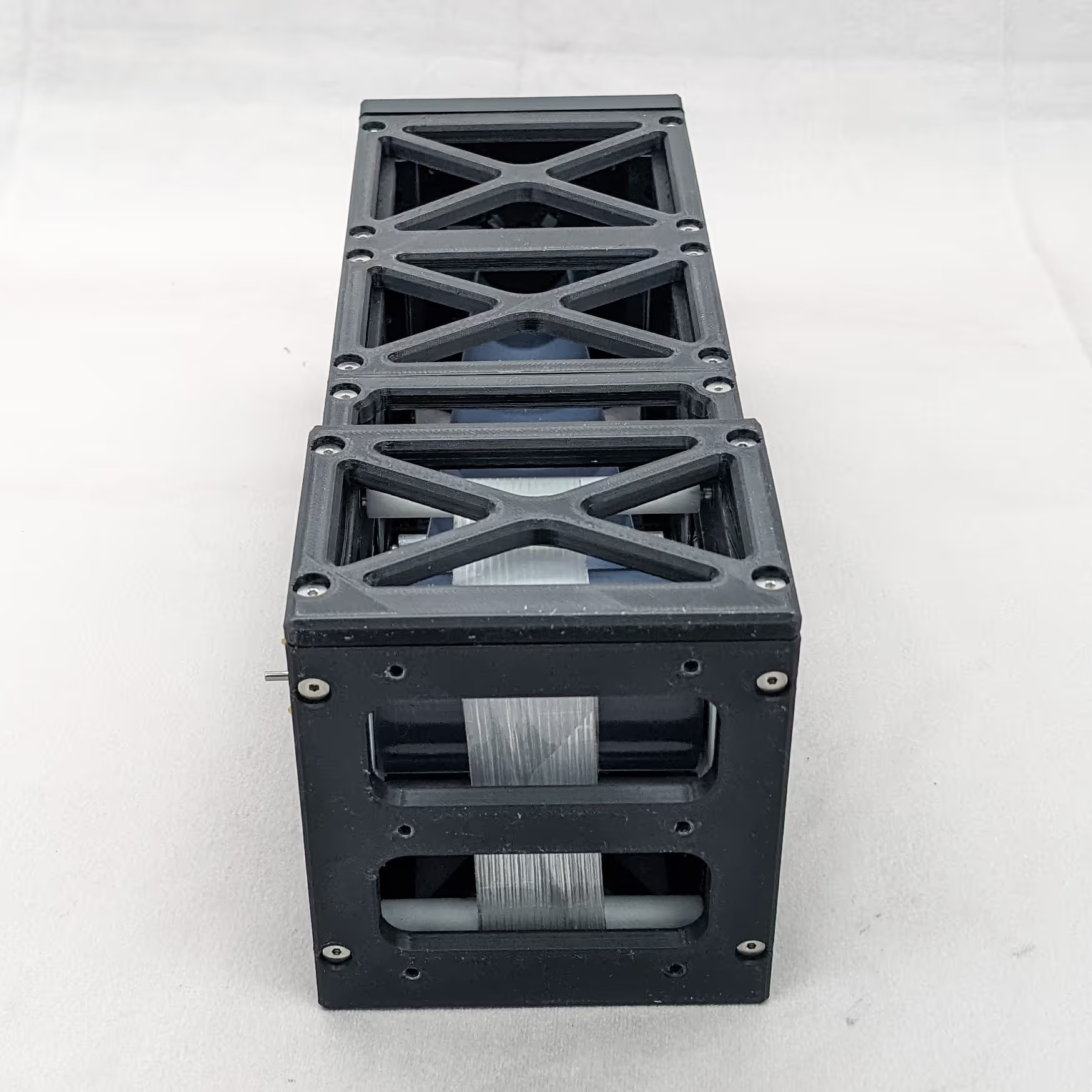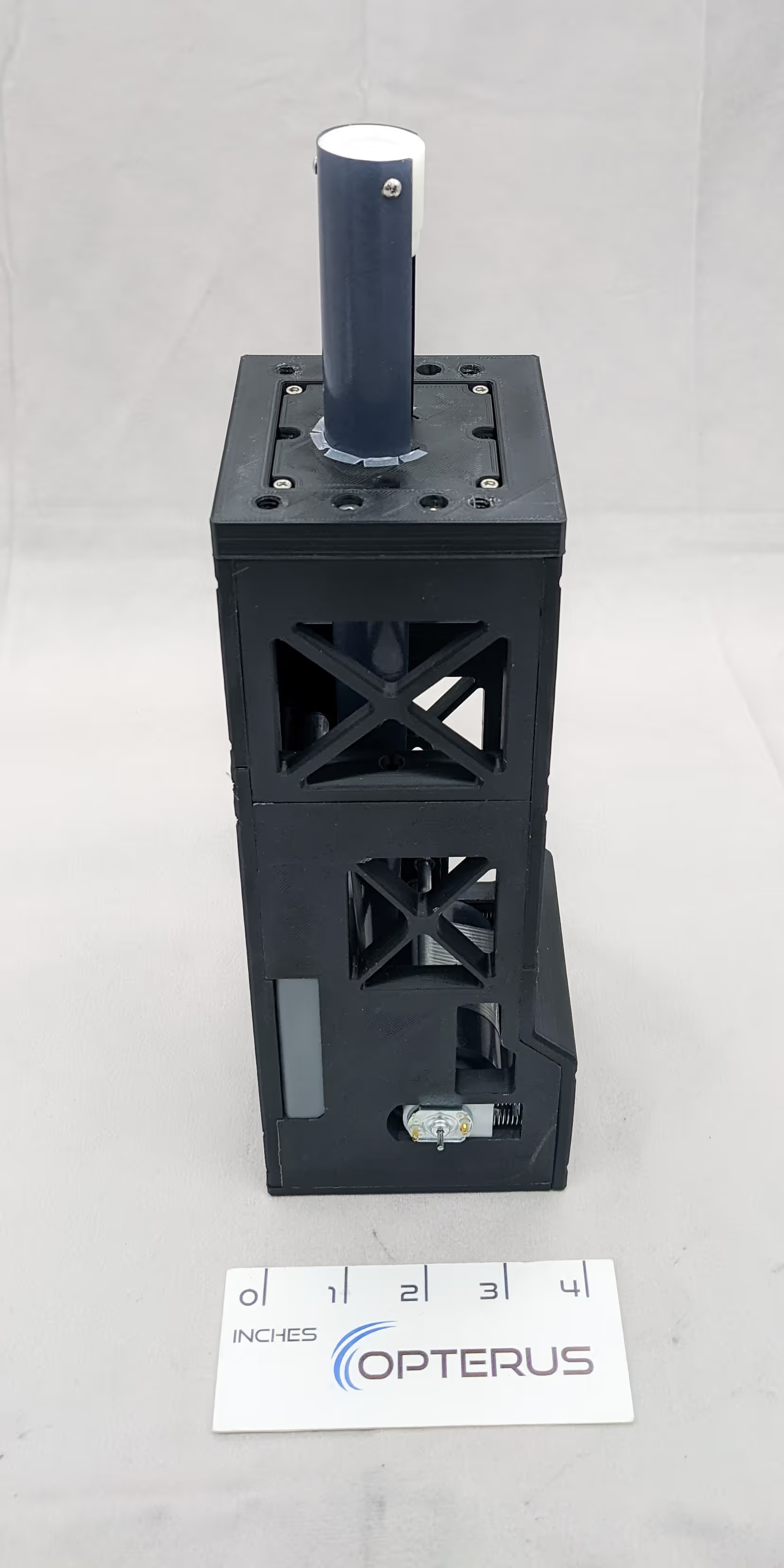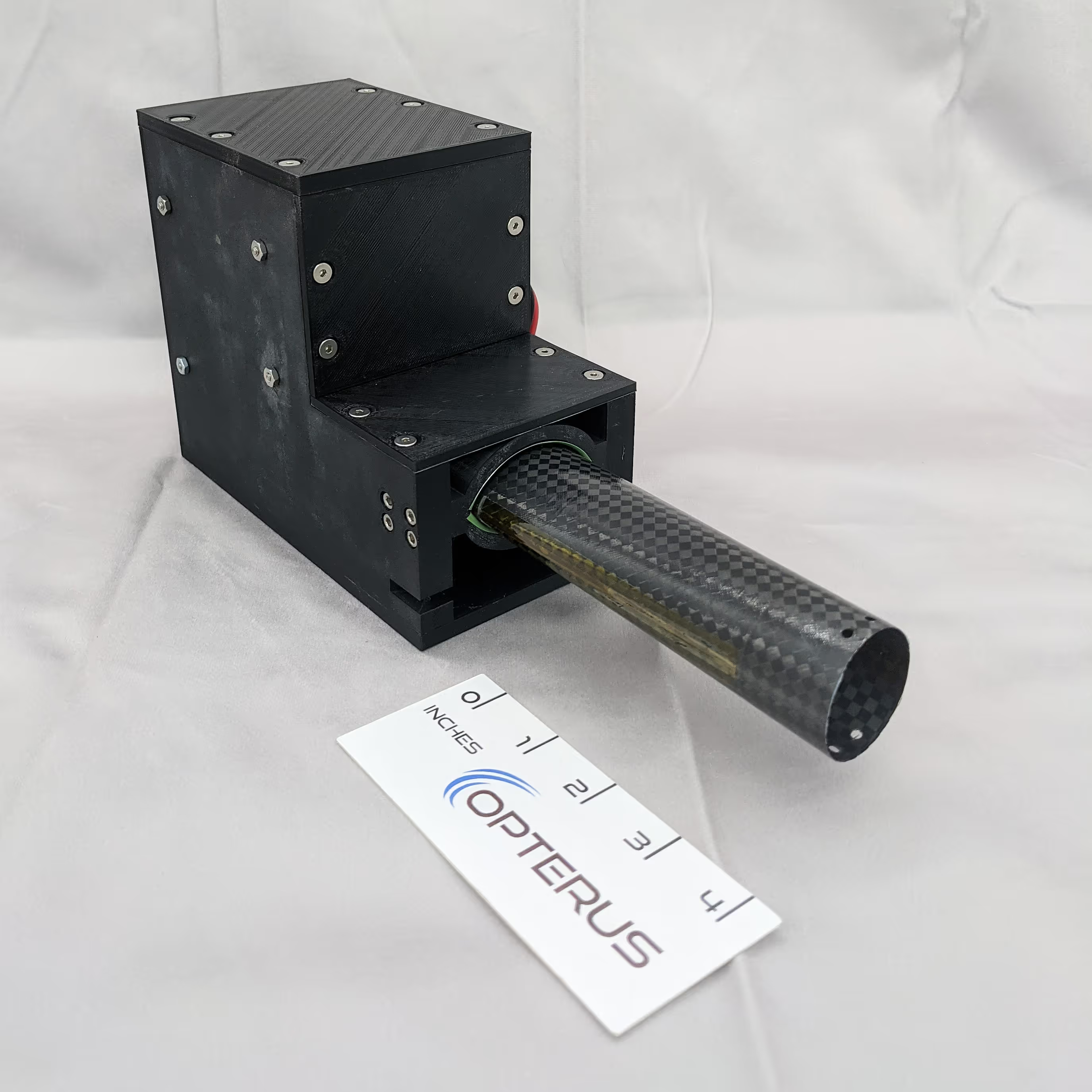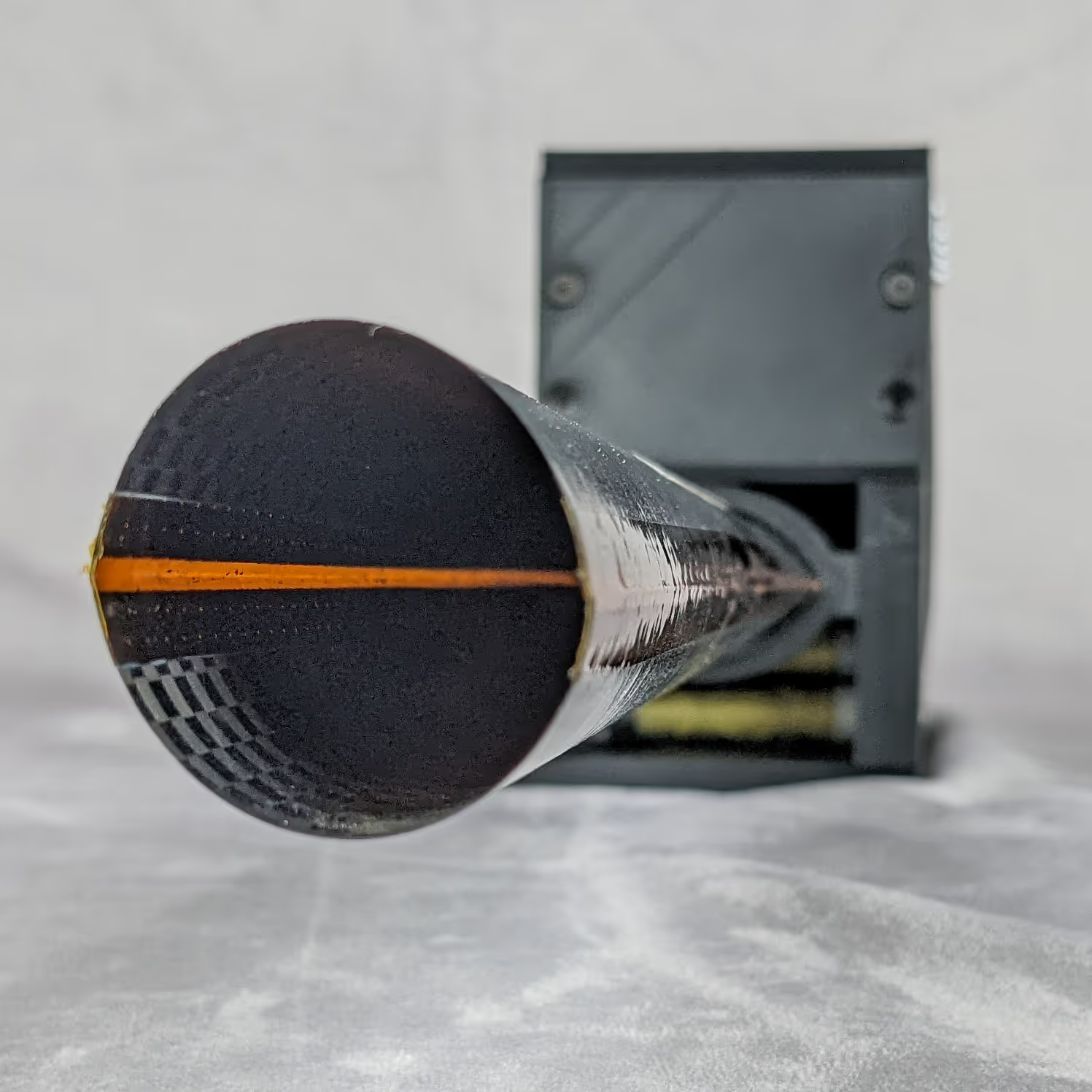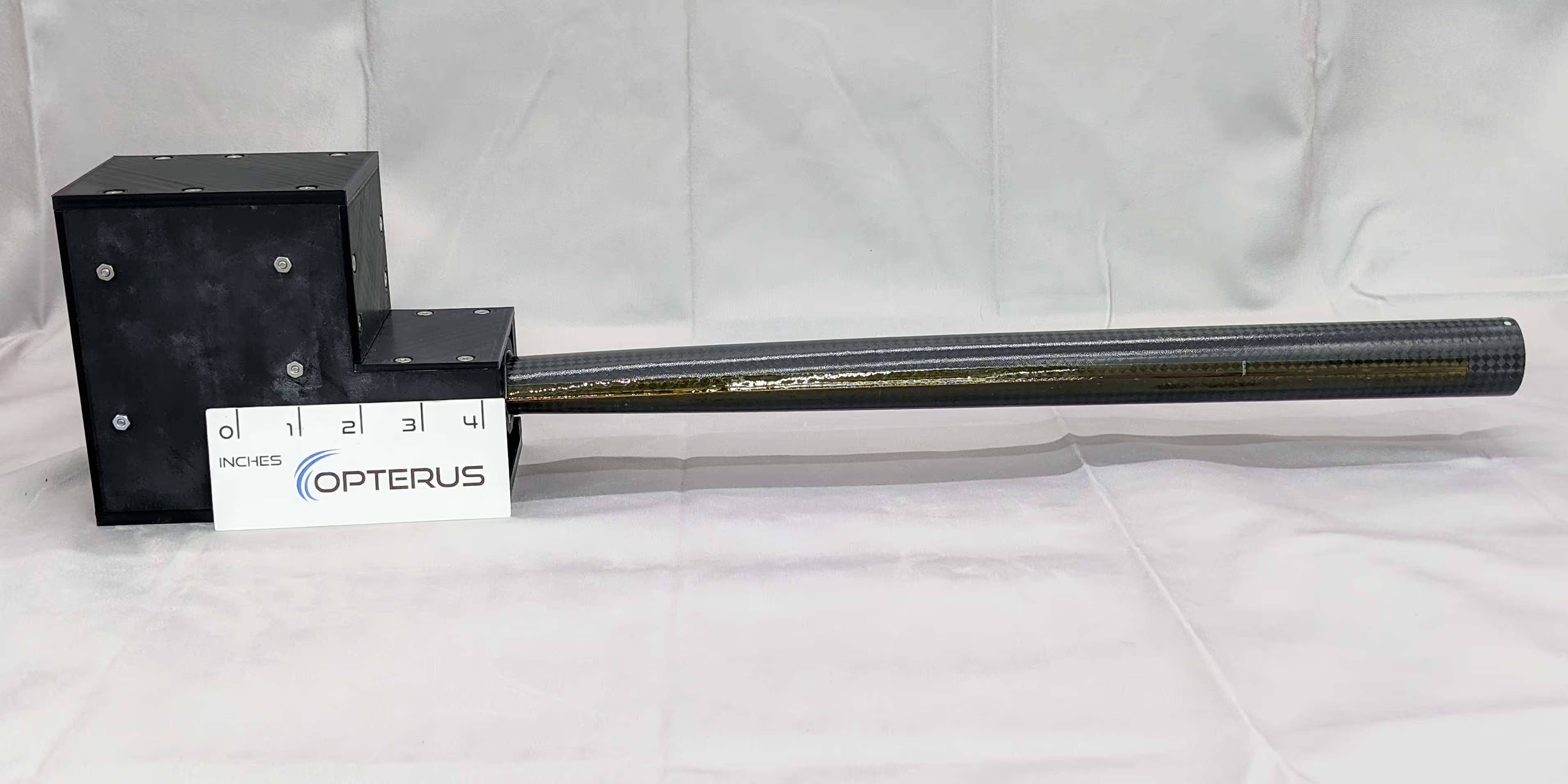Opterus is developing Tensioned Precision Structures (TPS) to achieve extremely high structural mass efficiency and resiliency apertures manufactured in space. TPSs use tension, not structural depth, to achieve dimensional stability. As a result, they minimize thermal deformations while achieving a very simple architecture. The basic architecture is a circular ring truss that tensions a network of cables within the ring. The cable network forms an effective membrane reference surface of extremely low mass and high precision.
The tensioned disc architecture is a compromise between resiliency, simplicity and mass efficiency and results from decades of experience solving the challenges of large space structures. With TPS, the ring truss is first fabricated in orbit bay by using Opterus’ patent pending TTAM architecture until a full ring is formed. Second, the cable network will be installed. Installation is notionally performed by autonomous robotic spacecraft that move along the ring truss and fastens cables to attachment points. The operational surface is then attached to the cable network. Where parabolic surfaces are needed, stand-offs are installed to actively shape the surface.
Opterus is developing Tensioned Precision Structures (TPS) to achieve extremely high structural mass efficiency and resiliency apertures manufactured in space. TPSs use tension, not structural depth, to achieve dimensional stability. As a result, they minimize thermal deformations while achieving a very simple architecture. The basic architecture is a circular ring truss that tensions a network of cables within the ring. The cable network forms an effective membrane reference surface of extremely low mass and high precision.
The tensioned disc architecture is a compromise between resiliency, simplicity and mass efficiency and results from decades of experience solving the challenges of large space structures. With TPS, the ring truss is first fabricated in orbit bay by using Opterus’ patent pending TTAM architecture until a full ring is formed. Second, the cable network will be installed. Installation is notionally performed by autonomous robotic spacecraft that move along the ring truss and fastens cables to attachment points. The operational surface is then attached to the cable network. Where parabolic surfaces are needed, stand-offs are installed to actively shape the surface.



Please provide your name and email to get product details.

815 14th St SW Suite C200
Loveland, CO 80537
(970) 822 - 7874
info@opterusrd.com


